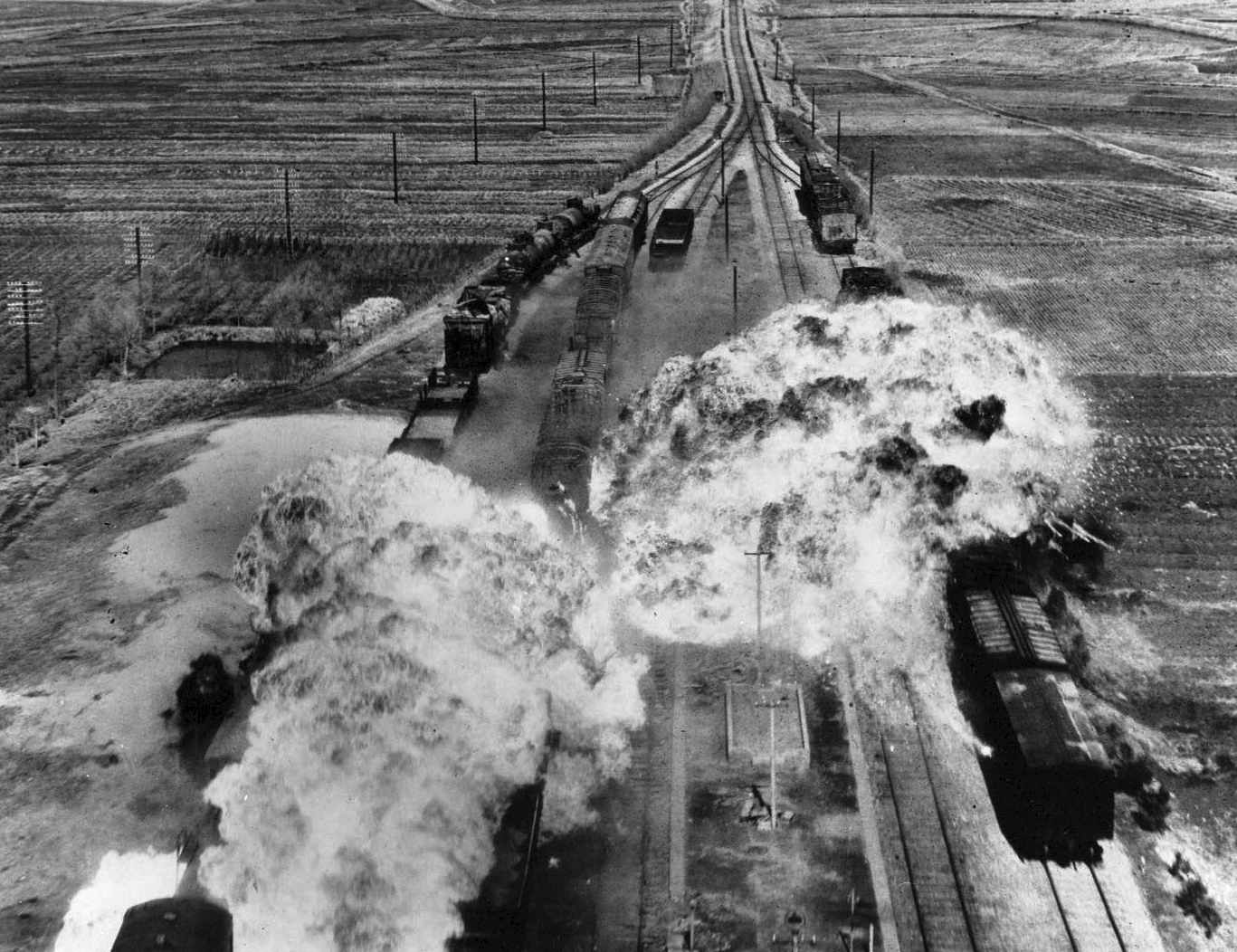Halfway across the world, however, Communism
continued to spread. China’s decades-long
civil war ended with a Communist victory as the Nationalists fled to Taiwan in
1950. Even before that war was over,
North Koreans from the area that had been occupied by Soviets after the war
invaded the South. South Koreans
appealed to the United Nations, who on June 25 enacted United Nations
Security Council Resolution 82 (the Soviets had boycotted the UN over the refusal
to recognize the PRC) and following resolutions calling up forces to help
defend the country. This put US
President Truman in a delicate position between a war-weary populace and the
prediction of losing Japan if Communism spread across the Sea of Japan. After much discussion with Secretary of State
Dean Acheson, he determined not to repeat the mistakes of appeasement as had
been seen with Hitler, but he doubted the desire of fellow Americans to enter
another war.
On
June 27, 1950, Truman announced before Congress that the United States would offer
support from its bases in Japan, funding, advisers, and arms, but only a
voluntary expeditionary force would be dispatched rather than a renewal of the
draft and a full declaration of war. The
UN and its allies would be supportive, but the US would not be “running the
show.” The first evidence of support was
the movement of the US Seventh Fleet into the Taiwan Strait, which ended the
PRC’s hopes of fully crushing the Nationalists.
Mao Zedong reorganized what would have been the invasion army for Taiwan
into the People’s Liberation Army North East Frontier Force to intervene in
Korea, whom Premier Zhou Enlai called “China’s neighbor.”
Reinforcements
from the UN arrived in September, as the South Koreans had been nearly pushed
off the peninsula. At the Battle of
Inchon, US, Canadian, and British naval attacks provided cover as a mixed group
of Allied marines stormed the beach and seized Kimpo Airfield. The largely unorganized Allies made some
advancement toward Seoul, but the lack of troops slowed progress despite the
clear supply line. That fall, the Chinese
again warned of intervention of the UN crossed the 38th Parallel
that had initially divided the North and South.
The UN obliged, preparing for winter as the South Koreans made their own
strikes across the border. Many, such as
General Douglas MacArthur in Japan, criticized the move, stating that victory
against North Korea should be absolute.
If the Chinese joined the war, then it would be another communist
country to defeat and liberate.
Instead,
the war became a stalemate as the South Koreans bolstered their defenses and
gradually replaced UN soldiers. In the
North, China and the Soviet Union gave aid, but neither side could legally
enter the fight. For the remainder of
his term, Truman kept up his doctrine of aid for communist-threatened countries
but felt glad he had kept America at large out of another war. Chinese expansion continued southward,
however, as they seized Tibet in 1950 and gave aid to rebels against
colonialism in French Indochina. The
Eisenhower Administration gave similar aid, but was unsuccessful in halting the
fall of Vietnam and Laos. Closer to
home, however, economic support to Cuba won over Castro’s new government.
In
the Middle East, meanwhile, the Soviets began to make political maneuvers to
expand their political influence. Americans
drew up their own allies, but notions of Pan-Arabism stilted the effect of
both. Instead, the US limited its efforts
while the Soviets pressed all the harder, leading up to the invasion of
Afghanistan in 1979. The war would prove
too costly for the Soviet Union, which had been decaying internally for years,
and contribute to its collapse in 1991.
Chinese
communism began to suffer similar decay, but the death of Mao Zedong in 1976
brought in a new generation of leaders who put into effect economic reforms
that brought a new era of prosperity. The
death of Hu Yaobang in 1989 led to protest for similar reforms on
democratization and freedom of speech, but the ideas were suppressed. The prosperity of smaller Asian communist
states has not followed as readily while some, such as Vietnam, do well with
tourism and manufactures while others still suffer repression.
North
Korea remained under the control of guerilla leader Kim Il-sung until he left
for Moscow in 1956 to stand up to Khrushchev’s de-Stalinization. Former followers seized the government and
worked to stop his return as his popularity had never recovered from his futile
invasion. This coup won over much of the
support of the military and of Mao Zedong, who had begun to question Kim’s stability. Kim was exiled to Russia, where he remained
despite attempts to reinvade his country.
North Korea continued as a satellite of China, but began to seek a more
independent stance in the 1980s. In
August 2000, the Koreas became reunified.
--
In reality, the US was the primary contributor to
the Korean War, and General Douglas MacArthur led the UN forces there. Early victories came swiftly with the UN
crossing the 38th Parallel on October 1 and even marching into China
itself in pursuit of North Korean armies.
The Chinese entered the war with over a million soldiers, and the
fighting became a stalemate near where it had started. An armistice was announced in 1953 with a
formal division in 1954 that lasts even today, though talks of reunification
are beginning to blossom.

No comments:
Post a Comment